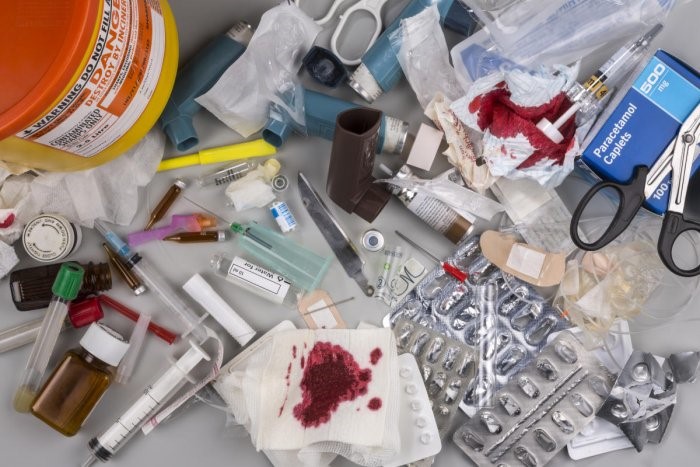How Hazardous is Hospital Waste?
7/29/2022

It is a paradox that waste generated from the attempts to cure people and make them healthy again can pose a risk to the health of others. It is normal for hospitals to produce medical waste that has the potential to harm those who are exposed to it.
Hospital waste can be classified into the following hazard categories:
Sharps
The greatest hazard of hospitals is the ‘sharps.’ These include scalpels and needles which come into direct contact with bodily fluids.
These are considered infectious waste because when they prick the person handling them, they can infect the person handling them with diseases such as HIV and Hepatitis. There have been cases where needles have been illegally re-used, making them even riskier than ever.
Chemical Waste
Another hazard posed by hospital waste is chemical waste. Although they are produced in small amounts from cleaning products and some medications, they are a poisonous hazard if not handled with care during disposal.
Radioactive Hazard
Radioactive waste is generated in hospitals through the use of medical equipment that contains radioactive materials. This equipment includes X-ray machines, nuclear medicine scanners, and cancer treatment machines.
The radioactive materials in the equipment can contaminate the surrounding area, and the waste must be properly disposed of to avoid contamination of the environment and the people who come into contact with it.
Final Words
Hospital waste must be carefully managed because it poses a serious threat to the population and the environment. Proper regulations must be put into place for the management of hospital waste to ensure the safety of anyone that is handling them.
Hospital waste can be classified into the following hazard categories:
Sharps
The greatest hazard of hospitals is the ‘sharps.’ These include scalpels and needles which come into direct contact with bodily fluids.
These are considered infectious waste because when they prick the person handling them, they can infect the person handling them with diseases such as HIV and Hepatitis. There have been cases where needles have been illegally re-used, making them even riskier than ever.
Chemical Waste
Another hazard posed by hospital waste is chemical waste. Although they are produced in small amounts from cleaning products and some medications, they are a poisonous hazard if not handled with care during disposal.
Radioactive Hazard
Radioactive waste is generated in hospitals through the use of medical equipment that contains radioactive materials. This equipment includes X-ray machines, nuclear medicine scanners, and cancer treatment machines.
The radioactive materials in the equipment can contaminate the surrounding area, and the waste must be properly disposed of to avoid contamination of the environment and the people who come into contact with it.
Final Words
Hospital waste must be carefully managed because it poses a serious threat to the population and the environment. Proper regulations must be put into place for the management of hospital waste to ensure the safety of anyone that is handling them.
